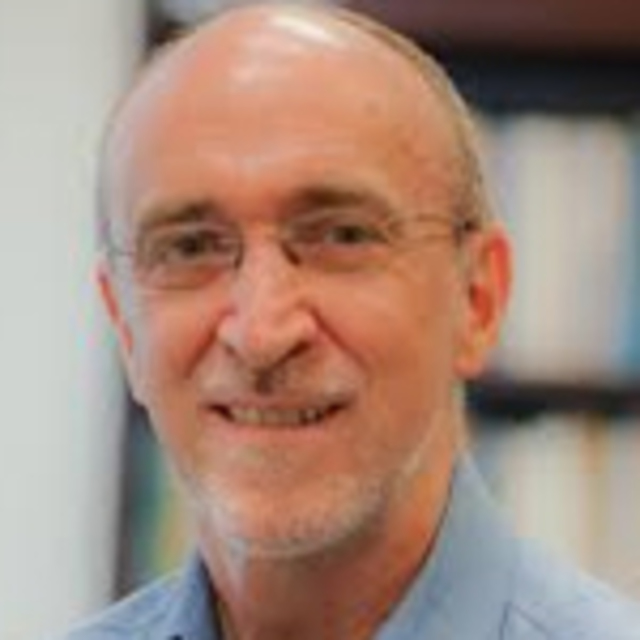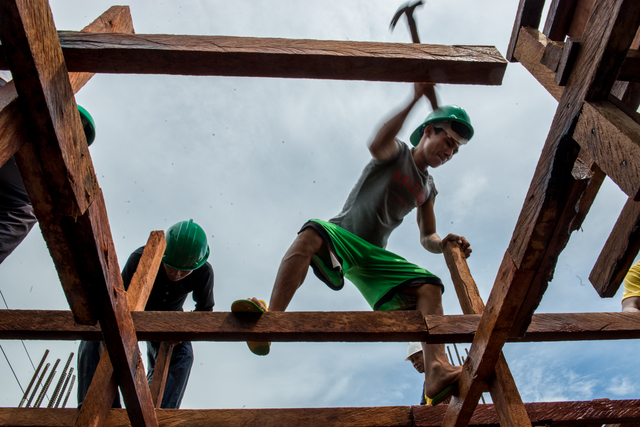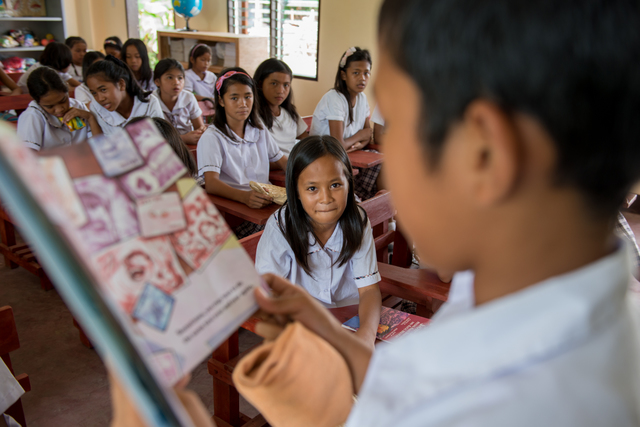Yes, there is such a thing!
SMUPA means “San Miguel Unity to Progress Association”. They are a group of farmers in Barangay San Miguel, Balangiga Eastern Samar - now a fledgling business startup with very high potential of making it to successes beyond their imaginations, if accorded more expert guidance, and hopefully more help from all of us, we happy earthlings!
 |
SMUPA officers & members pose for a souvenir photo with visitors Dindo Mengote-ADB JFPR Consultant, Aya Yamagata - Plan International Japan and Justine Turner - Plan International Canada |
|
|
|
How did this happen?
They started as a Cash For Work (CFW) group in August 2015, organized by Plan International (Plan) with funding from ADB JFPR Grant 9175. This program was activated, instead of Plan-ADB/JFPR just automatically giving dole-out amounts to people devastated by super typhoon Yolanda. They were asked to work on something that would benefit their community, for a "reward" amount of P260/day - equivalent to the minimum wage in the region. But only for one month. So, each member expected to receive just little over P7,000 if the work was actually to last a month.
 |
| They still use the banner that identified them as a Cash-For-Work group in August 2015! |
What did they do as CFW volunteers? Other groups did other things, but this group (with guidance from the local authorities and Plan Int'l, opted to re-plant mangroves so that the area in their barangay wiped out by Yolanda could become a mangrove forest once more. They were taught how to extract seedlings from mangrove trees that remained. They were also taught how to care-for (wean) these little trees in a makeshift nursery, until ready for planting. And of course, they had to learn the technical details in re-planting mangroves. All that, and the work was a success enough - they received remuneration that they considered help enough for their daily needs. But until when will a P7,000++ last for each family?
Twist of fate!
Four months after their CFW experience, mother earth must have smiled a bit, as the mangrove trees they planted have generally grown well! Hurray for us earthlings... and to them who planted!
But a better twist came in November 2015. A challenge... an opportunity...

Maslog (south-most barangay of Lawaan, Eastern Samar) an adjacent barangay to San Miguel (being the northern-most barangay of Balangiga) had a mangrove planting project too - funded by another INGO. They learned about the little nursery that the San Miguel group had done in the past and offered to buy seedlings so they can also re-grow their portion of the contiguous mangrove forest on this area of Eastern Samar. Not at first thinking about the earnings, but still on the "help mother earth mood" our CFW folks in San Miguel re-grouped to reproduce at least 2 species of the mangrove trees!
A registered business entity!
While growing the seedlings, this CFW group thought of formally organizing themselves, as they expected money would come in, and they better have rules to properly manage an upcoming earning potential.

10 November 2015, 41 members gathered and contributed membership/registration fees of P50 per person. They agreed to also pitch-in a monthly (due) of ten pesos (P10) each moving forward, for which 22 members already paid in advance. Thus, the group had a starting capital of P2,220 that they thought would probably be enough to get them through some materials (seedling bags) and clerical/administrative expenses! Yes, Mana Cynthia, they now know they need money to earn more money! Oh, it was at this "incorporation meeting" that they decided to call themselves SMUPA - San Miguel Unity to Progress Association!
Open for Business and more!
And.., the first sale of 1,500 seedlings (at P10 each) happened on 23 November, followed by their second delivery to the same buyer (Barangay Maslog) of an additional 5,000 seedlings two days after Christmas!
Eyes grew wide.., all of a sudden, their "love mother earth" activity had just earned them P65,000 pesos! Whoa! "What to do?"!
Heavenly Gods were probably smiling at SMUPA as they entered the New Year 2016 with an admirable amount of ‘cash on hand’ just for growing mangrove seedlings!
Simultaneously, in and around Christmas time, more blessings were hovering upon SMUPA: still under the ADB JFPR Grant 9175, Plan International was at about the time, organizing/qualifying groups to become beneficiaries, who could receive ‘seed capital’ of up to P100,000 if they pass the rigorous screening in what is called the "Community Based Enterprise Development" (CBED) Program. SMUPA members, being ex-CFW volunteers are familiar with, and are friends with Plan International's CDF (community development facilitator) Diana Baradan who told them about the opportunities in/by learning about CBED.
 |
| CBED groups underwent Financial Literacy Workshops. This "financial statement" is one of their learnings! |
SMUPA went all out to join and learn in the CBED training, presented and defended their business proposal (business plan), and came out successful to pass the screening to become a recipient of a P45,000 seed capital (as proposed by the group)! This seed capital is coming their way anytime soon!
Challenges
Not everything is a joyride for SMUPA though. There are little kinks they have to attend to, especially on the 'management side'. Thus the Plan-ADB/JFPR group is still handholding them along the way to tackle these challenges.
Challenges like what?
Membership attrition. From a start of 41 members, there are now just 25. Most of the attritees are male members (only 6 remain active). Main reason for leaving the group? As heads of their respective families, they still have to individually look for daily subsistence, since SMUPA by-laws declare that they can only split their earnings (as dividends) at the end of any year; and three consecutive absences mean they'll have to be expelled from the association. Hmm and however, on the other hand, due to their need for more hands, SMUPA has actually already employed 10 non-member folks to help in the bagging and preparation of seedlings at one peso a piece. So a question is now on their ‘congress floor’ – can’t we as SMUPA members be the employees too to work and receive one peso per seedling prepared? Let the board decide! They soon will!

Transportation to/from this nursery is an issue too. This lot area lent to the association is way far (about 2 kilometers) from their residences. Though the nursery is just along the national highway, it costs them P20 one-way via habal-habal, and not all can afford that - even if they come to work only on Tuesdays, Thursdays and Saturdays. Not to mention lunch while at this nursery. And some mothers already bring their little tots with them to this nursery.
Cuts and bruises. Getting the mangrove seedlings from the source (marshes) requires some skill that even the so-called expert members still usually incur cuts and bruises in the process. They probably need to be tooled more, not only with proper gears, but also with technical procedures and utmost care for their personal safety.
All these are (of course) being looked into by the Plan staff who are constantly on the watch to ensure SMUPA's success.
Ca WE help?
If you... yes you reading this... if you have reached up to this part reading this article... you are needed to pitch-in a little help.
How? Tell the whole country and the whole world via FB, Twitter, Txt, email or calls, that we all need to re-grow our mangroves, and if anyone need the seedlings, SMUPA is just a call or txt away. Help us spread the word to sustain SMUPA's market. Maricel Badilla, the Secretary of SMUPA can be reached via +63 916 337 5599.

Market?
Yes there is, but for how long? They have an upcoming order of about 65,000 seedlings from their LGU itself and probably another 5,000 seedlings from a youth organization planning to do their own share to care for our mangroves. Fantastically brisk business! But, only having more orders at regular intervals will sustain this endeavor, so that the merrier SMUPA will be, and of course, the happier this planet will be!
So, while encouraging everyone to re-green our planet, let’s also tell this whole world there is SMUPA that can provide us with mangrove seedlings!
In the first place… we're all in this together, right?!




























